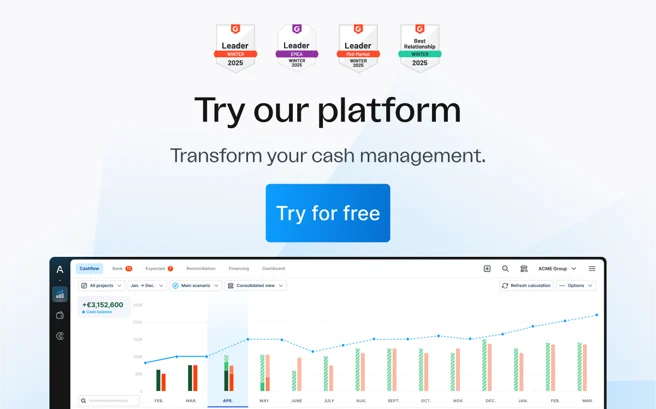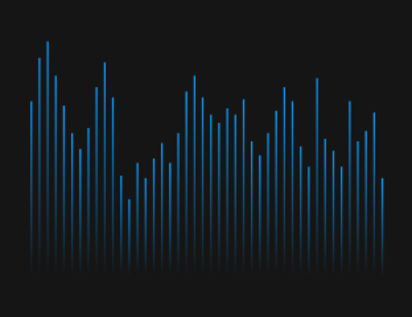What is a leverage ratio, and how to calculate it

Leverage ratios are important financial measurements that highlight the level of capital financed through debt and indicate a company's ability to meet its financial obligations. These ratios let a company understand its financial leverage and assess whether it can pay off its liabilities on time.
It's a significant financial metric for businesses to course correct, helps potential investors decide if they'd like to invest in the business, and lets creditors determine whether they'd like to extend more credit to the company.
What is a good leverage ratio?
The answer to this question depends on the leverage ratio you use.
Usually, a lower leverage ratio indicates a business's solvency. It informs potential investors and creditors that a company is not a risky proposition and is less likely to default on its payments.
So for a leverage ratio, such as the debt-to-equity ratio, the number should be below 1. Anything below 0.1 shows that a company doesn't have much debt, and a ratio of 0.5 exhibits that its assets are double its liabilities. In contrast, a ratio of 1 suggests that its equity and debt are equal.
Businesses with a debt-to-equity leverage ratio below 1 are often categorised as high-performing and low-risk ventures. Companies with a leverage ratio higher than 1 often fall under the risky investment or cause for concern category.
But a higher number is preferred for certain leverage ratios, such as the interest coverage ratio.
How is leverage calculated?
You can calculate your business’s leverage by using any of the leverage ratio formulas given below, depending on your business requirements.
- Debt-to-Equity ratio
This is one of the most important leverage ratios as it shows a company’s financial liabilities in relation to its shareholder’s equity.
Debt-to-Equity ratio = Total Debt / Total Equity
- Equity Multiplier
Also known as the asset-to-equity ratio, this financial ratio is helpful for a company as it indicates the level of assets financed by way of shareholder’s equity.
Equity Multiplier = Total Assets / Total Equity
- Debt-to-Asset Ratio
This financial metric measures a company’s total debts (liabilities) in relation to its total assets.
Debt-to-Asset Ratio = Total Debt / Total Assets
- Debt-to-Capital Ratio
This ratio indicates the level of debt a company uses to fund its operations relative to capital.
Debt-to-Capital Ratio = Total Debt / Total Capital (Total Debt + Total Equity)
- Debt-to-EBITDA Ratio
This ratio measures the income generation of a company for paying off its debts and liabilities against EBITDA (Earnings Before Interest, Taxes, Depreciation, and Amortisation).
Debt-to-EBITDA Ratio = Total Debt / EBITDA
Leverage ratio: Examples
Now that you’re familiar with the most common leverage ratios, let’s understand them better with the help of leverage ratio examples.
Suppose a Company LTG has provided the following financial data:
- Total Assets: £100 million
- Total Debt: £75 million
- Total Equity: £80 million
- EBITDA: £40 million
Applying the leverage ratio formulas discussed above, LTG’s:
- Debt-to-Equity Ratio = £75 million / £80 million = 0.9375
- Asset-to-Equity Ratio = £100 million / £80 million = 1.25
- Debt-to-Asset Ratio = £75 million / £100 million = 0.75
- Debt-to-Capital Ratio = £75 million / (£75 million + £80 million) = 0.48
- Debt-to-EBITDA = £75 million / £40 million = 1.875
Leverage ratio: Interpretation
A leverage ratio’s interpretation depends on the ratio you use to judge your company’s financial leverage. But the key elements to consider are assets, equity, debt, and interest on the debt.
Too much debt can indicate that the company is in danger. However, if the company can generate higher revenue through its operations than what needs to be paid as interest on its loans or other liabilities, it indicates that the debt can be used to propel a company’s growth.
On the contrary, if the debt is practically nil, that’s not a good sign either. It indicates a reluctance to borrow money on the company’s part, which could be a sign of negative or very tight operating profits.
Continuing the example of LTG, its debt-to-equity ratio is 0.9375, which is below 1. It shows that LTG’s assets and liabilities are almost equal, and it uses owned funds to finance its growth, operations, and expansion plans.
Further, an asset-to-equity ratio of 1.25 shows that LTG leverages equity to purchase assets rather than debt. A debt-to-asset ratio of 0.75 (less than one) presents that LTG has more assets than it does debts.
A debt-to-capital ratio of 0.48 is indicative of LTG’s policy to fund its operations using equity rather than debt. This makes LTG a lucrative investment opportunity for businesses.
Finally, a debt-to-EBITDA ratio of 1.875, which is lower than 3, presents LTG in a good light. This is because this ratio assures that there’s a high probability that LTG will pay off its debts on time.
Leverage ratio: Denominator
A leverage ratio’s denominator will change based on the ratio you pick for your business.
However, the Basel III accords introduced a minimum leverage ratio (Tier 1 leverage ratio) for banks to ensure that a bank has enough liquid cash to comply with specific stress tests.
To calculate a bank’s Tier 1 leverage ratio, the bank's total assets (reported in the bank’s annual financial statement) are placed in the leverage ratio denominator, and its core capital reserves, consisting of common equity, retained earnings, and other instruments, serves as the numerator in this formula.
Basel III established a minimum 3% leverage ratio requirement for banks, but the higher the Tier 1 leverage ratio, the stronger a bank’s financial standing.
Key takeaways
There are other popular leverage ratios that a company can use to identify its financial strength, such as the operating leverage ratio, interest coverage ratio, and fixed-charge coverage ratio. No matter the leverage ratio you choose, it’ll indicate your business’s financial stability and stance on debt.






